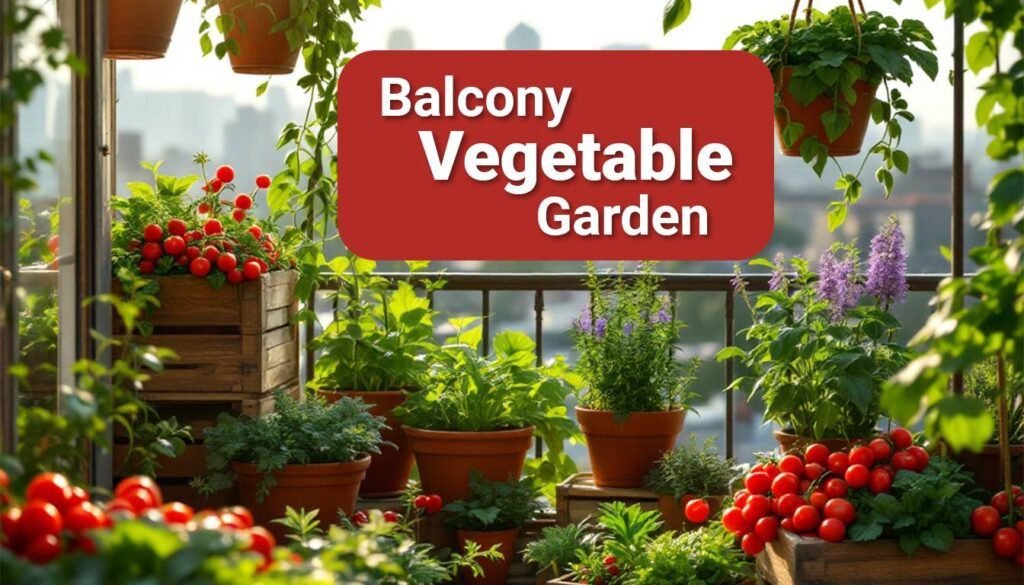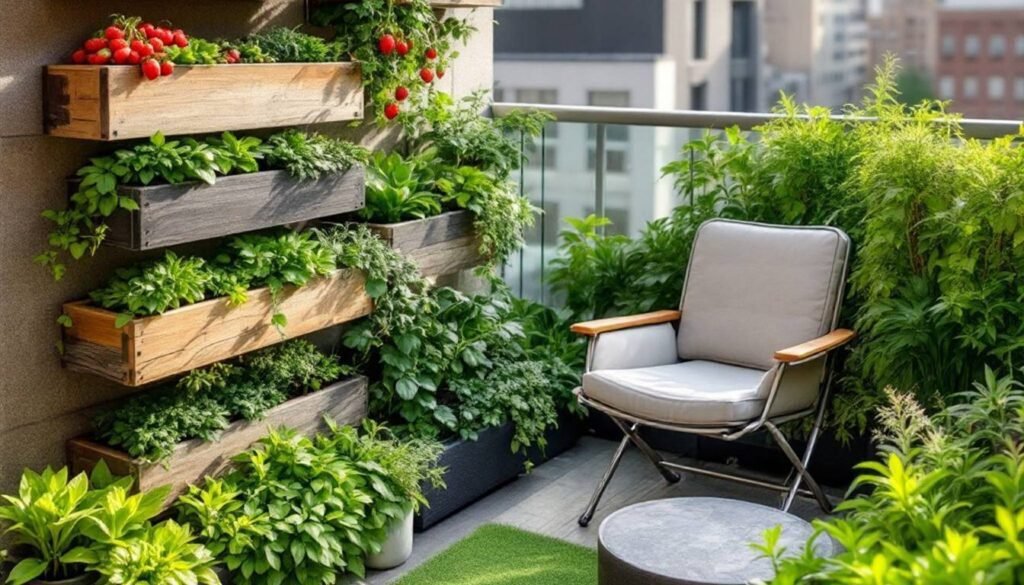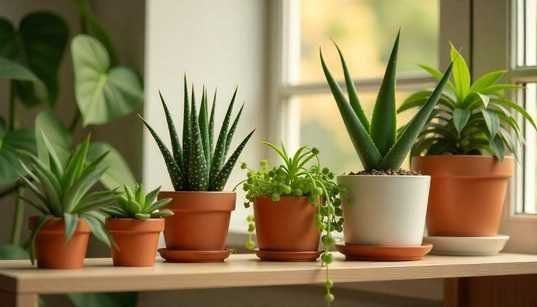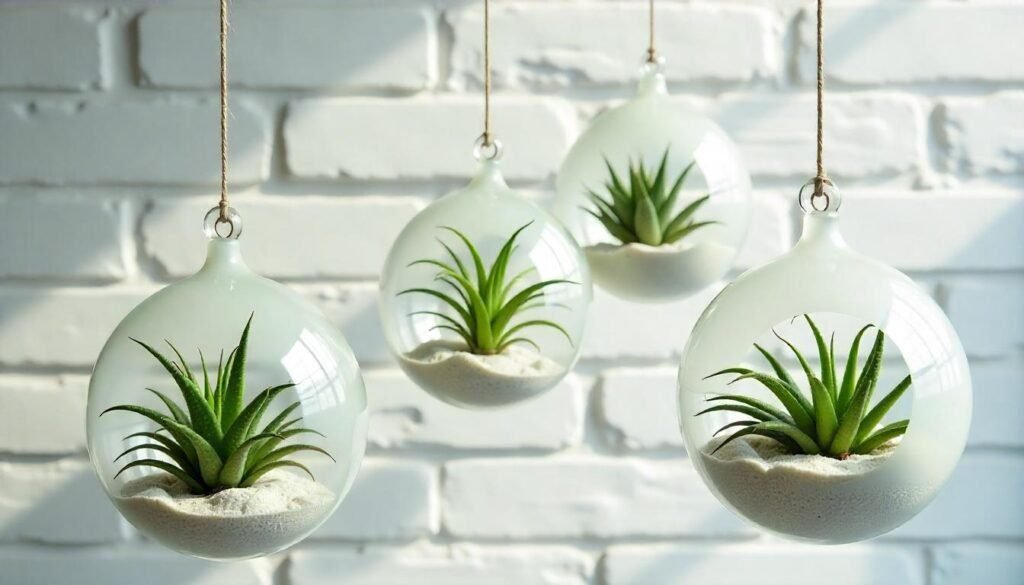Introduction to Balcony Gardening
In recent years, the concept of balcony gardening has gained significant traction, especially in urban settings where space is a premium. This gardening method involves the cultivation of plants on balconies or patios, allowing individuals, even in apartments, to harness the benefits of home gardening. The rise of balcony vegetable gardens serves as an innovative solution to urban living challenges, providing city dwellers with access to fresh, organic produce right at their doorstep.

The importance of balcony gardening cannot be understated. It offers a practical approach to food production in constrained environments, where traditional gardening methods may not be feasible. By utilizing available space, individuals can cultivate vegetables, herbs, and fruits, thus diminishing reliance on store-bought produce that often travels long distances before reaching consumers. This not only promotes sustainability but also reduces the carbon footprint associated with food transportation.
In addition to its environmental benefits, growing a balcony vegetable garden supports health and well-being. Engaging in gardening activities encourages physical movement, which can enhance mental health and stress relief. Furthermore, cultivating one’s own food leads to greater awareness of dietary choices and nutrition. Homegrown vegetables are typically free from harmful pesticides and chemicals, ensuring a cleaner, healthier diet for those who partake in this endeavor.
Balcony gardens also contribute to elevating urban biodiversity by attracting various forms of wildlife, including beneficial insects and pollinators. This integration of nature into urban areas can lead to improved ecosystems, making cities not only livable but also vibrant. Overall, balcony gardening presents a unique opportunity for city dwellers to reconnect with nature, promote sustainability, and enjoy the myriad benefits of growing their own organic food in limited spaces.
Choosing the Right Vegetables for Your Balcony
When embarking on the journey of establishing a balcony vegetable garden, the selection of appropriate vegetables is crucial. The limited space and specific conditions of a balcony necessitate careful consideration to ensure a thriving and productive garden. Several factors play a significant role in determining which vegetables will flourish in your container setup, primarily sunlight exposure, climate, and the available area.
Also Read Trending Post
- 20 High Protein Meal Prep Ideas for Weight Loss, Muscle Gain & Busy Lifestyles (2025 Guide)
- Healthy and Sustainable Rooftop Gardening Guide for Beginners: Simple and Effective Methods
- Eco-Friendly Meal Prep Ideas: 10 Essential Tips for Healthy and Sustainable Eating
- Microplastics: Invisible Danger in Our Food, Water, and Environment
- Top 25 Plant-Based Protein Sources Chart: Your Ultimate Visual Guide for a Healthier Diet!
Sunlight is a fundamental aspect in vegetable gardening. Most vegetables require at least six hours of direct sunlight daily to grow successfully. If your balcony receives full sun, you can consider sun-loving varieties such as tomatoes, peppers, and eggplants. In contrast, if your balcony is shaded for part of the day, leafy greens like spinach, lettuce, and kale are excellent choices, as they can tolerate partial shade while providing abundant harvests.
Climate also significantly influences your vegetable selection. Understanding the local climate will help in choosing vegetables that can withstand specific temperatures and potential weather challenges. For example, warmer climates favor heat-tolerant crops like beans and squash. Conversely, cooler regions may require a focus on cool-season vegetables. Always consider the growing season—some vegetables, such as radishes, can be planted in spring and again in fall, allowing for multiple harvests throughout the year.
Lastly, the available space on your balcony can dictate the scale and type of vegetables you grow. Compact varieties or those suitable for container gardening, such as dwarf cherry tomatoes, salad greens, and herbs like basil and parsley, are ideal for limited space. Herbs not only complement many dishes but also enhance the aesthetics of your balcony vegetable garden, making them an excellent addition.
By understanding these critical factors, you can select vegetables that will thrive in your balcony setting, ensuring a successful and satisfying gardening experience.
Essential Tools and Supplies for Balcony Gardening
Creating a balcony vegetable garden requires basic gardening tools and supplies that cater to small-space gardening needs. Investing in quality items can significantly enhance the growing experience while ensuring the maintenance of your plants is efficient and straightforward. Whether you’re a novice or seasoned gardener, the following tools are essential for cultivating a successful balcony vegetable garden.
First and foremost, a set of hand tools, including a trowel, hand cultivator, and pruning shears, are vital for planting, digging, and maintaining your garden. A trowel aids in digging holes for seedlings or bulbs, while a hand cultivator helps to aerate and mix the soil. Pruning shears are essential for cutting away dead or diseased foliage, encouraging better growth and fruit production.
Next, selecting the right pots and containers is crucial. Opt for lightweight materials such as plastic or resin that can withstand the elements. Moreover, ensure pots have proper drainage holes to prevent waterlogging, which can harm the roots of your vegetables. Various container sizes will allow for a diverse balcony vegetable garden—consider larger pots for plants with substantial root systems and smaller ones for herbs and leafy greens.
Soil choice cannot be overlooked; a high-quality potting mix designed for container gardening is optimal for your vegetable plants. This mix should be rich in organic matter and nutrients to provide the necessary support for healthy growth. Additionally, incorporating organic fertilizers, such as compost or worm castings, will significantly enhance soil fertility, fostering robust, fruitful plants.
By gathering the appropriate tools and supplies, you lay a strong foundation for your balcony vegetable garden. These essentials will equip you to effectively cultivate and maintain a thriving garden space, maximizing your yields even in small areas.
Planning Your Balcony Garden Layout
Creating a successful balcony vegetable garden begins with thoughtful planning and layout design. The limited space available on a balcony challenges gardeners to be strategic about their garden’s spatial organization. An effective layout maximizes growing potential while also emphasizing aesthetic appeal.
One effective strategy for utilizing vertical space is through vertical gardening techniques. Installing shelves, wall planters, or trellises allows for more plants to occupy the same floor space while also ensuring they receive ample light. This approach not only enhances productivity but also adds visual interest. Climbing plants such as pole beans and cucumbers can be trained to grow vertically, effectively maximizing growing space and minimizing clutter.
Container arrangements play a significant role in planning your balcony garden. Opt for containers of varying sizes and shapes to suit the needs of different plants. Consider stacking pots or using tiered plant stands to increase plant numbers without occupying more ground space. Utilizing appropriate sizes for various plants ensures that their root systems have room to thrive, which is crucial for the overall health of a balcony vegetable garden.
Light exposure is another critical factor to consider. Position containers based on the sunlight each receives throughout the day. Some plants, such as lettuce and herbs, thrive in partial shade, while others, like tomatoes and peppers, require full sun. Grouping plants with similar light preferences together creates a more harmonious and efficient balcony garden, allowing gardeners to cater to the specific needs of each plant type.
Incorporating these careful planning strategies will lead to a productive and aesthetically pleasing balcony vegetable garden. By utilizing vertical gardening, strategically arranging containers, and optimizing light exposure, gardeners can effectively maximize their limited space while fostering healthy growth and an inviting environment.
Soil Preparation and Potting Techniques
In a balcony vegetable garden, the foundation of healthy plant growth begins with soil quality and preparation. Unlike traditional gardens, where natural soil may be abundant, container gardening necessitates a careful selection of soil mixes tailored to specific needs. A well-prepared potting mix retains moisture, provides adequate drainage, and is rich in nutrients that are essential for vegetable production, particularly in small spaces.
When preparing the soil for your balcony vegetable garden, consider using a high-quality potting mix rather than garden soil. A reliable potting mix often includes components such as peat moss, vermiculite, and perlite, which enhance both aeration and drainage. The inclusion of organic compost is also beneficial, as it enriches the soil with vital nutrients and beneficial microorganisms. When looking for a soil mix, opt for formulations specifically designed for container gardens, ensuring it appropriately retains moisture without becoming saturated.
Drainage is critical in container gardening. Ensuring that your pots have drainage holes prevents excess water accumulation, which can lead to root rot. To further improve drainage, consider placing small stones or broken pottery at the bottom of pots before adding your potting mix. Additionally, elevating the pots with pot feet or a draining tray can facilitate air circulation, further supporting root health. Regularly check the moisture level of your soil; it should be moist but not soggy. A simple finger test can help assess this—insert your finger into the soil up to the second knuckle; if it feels dry, it is time to water.
Integrating these soil preparation and potting techniques will substantially contribute to the success of your balcony vegetable garden, allowing you to grow organic produce even in limited spaces. By prioritizing quality soil and proper drainage practices, you set the stage for healthy plants and an abundant harvest.
Watering and Fertilization Strategies
Effective watering and fertilization are crucial for the success of any balcony vegetable garden. Given the limited soil volume typical of container gardening, maintaining appropriate moisture levels is essential. Plants grown in containers tend to dry out faster than those planted in traditional garden beds due to increased exposure to air and sunlight. Therefore, it is advisable to check the moisture daily, ensuring the top inch of soil remains consistently moist but not waterlogged. A drip irrigation system or self-watering pots can be beneficial, allowing for steady hydration even when gardening schedules become hectic.
When it comes to fertilization, choosing organic fertilizers can significantly enhance your balcony vegetable garden’s health. Organic fertilizers, such as compost, fish emulsion, or well-rotted manure, provide essential nutrients without the harmful effects associated with synthetic products. Regularly incorporating these organic amendments into the soil can support a thriving garden ecosystem. It’s critical to apply fertilizers at the right intervals, typically every four to six weeks, adapting the frequency based on the specific needs of your crops. For instance, leafy vegetables may benefit from a higher nitrogen content, while fruiting plants like tomatoes and peppers require more phosphorus and potassium.
Moreover, understanding your plants’ nutritional needs allows for tailored care. During the growing season, monitor the plants for signs of nutrient deficiencies such as yellowing leaves or stunted growth. These indicators can help dictate adjustments in your fertilization plan. Keeping a balanced approach to both watering and feeding will ensure that your balcony vegetable garden yields healthy, organic produce. By fostering optimal conditions, you empower your plants to thrive and maximize their potential in the limited space available.
Pest Control in Small Spaces
Maintaining a balcony vegetable garden often comes with its share of challenges, particularly regarding pests. Due to the limited space and close proximity of plants, infestations can occur more rapidly than in traditional gardens. Recognizing common pests that target balcony gardens is the first step in effective pest management. Common intruders include aphids, spider mites, whiteflies, and slugs. Each of these pests can cause significant damage to your plants if left unchecked.

Preventive measures play a crucial role in controlling pests organically. First, ensure proper plant spacing to promote airflow and discourage the buildup of moisture, which can attract pests. Regularly inspecting your plants for signs of infestation is essential. If you detect pests early, you can often manage them before they spread. Employing companion planting—a strategy where beneficial plants are grown alongside vegetables—can attract natural predators, such as ladybugs and lacewings, which will help in keeping harmful pests at bay.
When it comes to natural remedies, several options can be easily incorporated into your balcony vegetable garden routine. A common method is to spray a mixture of water and a few drops of dish soap directly onto the affected plants. This solution can suffocate soft-bodied insects like aphids and spider mites. Additionally, using neem oil—a natural pesticide derived from the seeds of the neem tree—can effectively control various pests while being safe for beneficial insects. Garlic and pepper sprays can also deter more stubborn pests without risking chemical exposure to your plants.
Ultimately, fostering an organic pest control approach for your balcony vegetable garden will not only safeguard your plants but also contribute to a healthier ecosystem. By integrating preventive measures and utilizing natural remedies, your small space can flourish with organic vegetables free from harmful chemicals.
Harvesting and Using Your Homegrown Vegetables
Harvesting is a crucial step in maintaining a successful balcony vegetable garden. The timing of your harvest significantly influences the flavor and nutritional value of your vegetables. Generally, leafy greens, such as lettuce and spinach, can be harvested when the leaves are young and tender, while root vegetables like carrots and radishes should be harvested when they are of adequate size but still firm. For fruiting plants such as tomatoes or peppers, the best time to harvest is when they reach their full color and firmness, indicating optimal ripeness.
When it comes to the actual harvesting process, using the right tools is essential to minimize damage to the plants. Sharp scissors or garden shears can help cut the stems cleanly, ensuring that the plant remains healthy and can continue to produce. It is best to harvest in the morning when the plant’s water content is high, as this not only enhances the freshness but also improves the taste of the vegetables.
After harvesting, properly storing your vegetables is important to maintain their freshness. Most leafy greens should be washed and placed in a slightly damp cloth or sealed in a plastic bag with air holes to maintain humidity. Root vegetables can be stored in a cool, dark space, ideally in a paper bag or wooden crate, to prevent spoilage. It is advisable to consume your harvest as soon as possible to enjoy the maximum nutritional benefits that come from homegrown organic food.
Utilizing your homegrown vegetables in cooking is another rewarding aspect of balcony gardening. Fresh produce can elevate any meal; consider incorporating a mix of your harvested vegetables into salads, stir-fries, or soups. By growing your own food, you not only enjoy the satisfaction of nurturing a balcony vegetable garden but also reap the benefits of reduced grocery costs and enhanced flavor in your meals.
FAQs: Balcony Vegetable Garden Tips for Urban Growers
1. What is the Easiest Vegetable to Grow on a Balcony?
Answer:
The easiest vegetables for balcony gardening are leafy greens like lettuce, spinach, and kale, along with herbs like basil and mint. These plants thrive in containers, require minimal space, and grow quickly even in partial sunlight. For beginners, cherry tomatoes (dwarf varieties) and radishes are also foolproof options.
Pro Tip: Start with seedlings instead of seeds to speed up growth.
2. What is the Best Container for a Balcony Vegetable Garden?
Answer:
Opt for fabric grow bags, self-watering pots, or lightweight plastic containers with drainage holes. Fabric pots (like 5-gallon grow bags) are ideal for root vegetables like carrots, while window boxes work well for herbs and lettuce. Avoid heavy ceramic pots if your balcony has weight restrictions.
Key Feature: Ensure containers are at least 12 inches deep for root development.
3. What Are the Most Common Garden Layouts for Growing Vegetables?
Answer:
Popular layouts for balcony gardens include:
- Vertical Gardening: Use trellises or wall-mounted planters for climbers like peas or beans.
- Tiered Shelving: Maximize space with multi-level shelves for herbs and small plants.
- Square Foot Gardening: Divide containers into grids to grow multiple crops in a small area.
4. Can I Grow Tomatoes on a Balcony?
Answer:
Yes! Choose dwarf or patio tomato varieties (e.g., ‘Tiny Tim’ or ‘Balcony Prize’) that thrive in pots. Use a 5-gallon container and a sturdy cage for support. Tomatoes need 6–8 hours of sunlight daily—place them on a south-facing balcony for best results.
5. What is the Fastest-Growing Vegetable?
Answer:
Radishes (ready in 3–4 weeks) and baby spinach (4–6 weeks) are the fastest-growing options. Microgreens like arugula can be harvested in just 2 weeks, making them perfect for impatient gardeners.
6. Which Vegetables Grow Best Together?
Answer:
Practice companion planting to boost growth:
- Tomatoes + Basil: Basil repels pests and enhances tomato flavor.
- Carrots + Lettuce: Lettuce’s shallow roots complement deeper carrot roots.
- Cucumbers + Nasturtiums: Nasturtiums deter aphids from cucumbers.
7. Which Direction is Best for a Balcony Vegetable Garden?
Answer:
A south-facing balcony is ideal for maximum sunlight (6–8 hours). East-facing balconies get gentle morning sun (good for leafy greens), while west-facing ones receive intense afternoon light (best for tomatoes/peppers). North-facing balconies may need shade-tolerant herbs like mint.
8. What is the Best Spacing for Vegetable Gardens?
Answer:
Follow these spacing guidelines for containers:
- Leafy Greens: 4–6 inches apart.
- Tomatoes/Peppers: 1 plant per 5-gallon pot.
- Carrots/Radishes: 2 inches between seeds.
Overcrowding reduces airflow and invites pests.
9. Is Morning or Afternoon Sun Better for a Vegetable Garden?
Answer:
Morning sun is gentler and reduces water evaporation, making it ideal for delicate greens. Afternoon sun (3+ hours) suits heat-loving plants like tomatoes, peppers, and eggplants. Use shade cloth if afternoon light is too harsh.
10. What is the Best Spot for a Balcony Vegetable Garden?
Answer:
Place plants where they’ll receive at least 4–6 hours of direct sunlight. Avoid areas blocked by walls or furniture. Use railing planters or hanging baskets to utilize vertical space. Ensure the spot is sheltered from strong winds.
11. Which Facing Garden is Best for Sunlight?
Answer:
- South-Facing: Full sun (best for most vegetables).
- East-Facing: Morning sun (ideal for herbs/leafy greens).
- West-Facing: Hot afternoon sun (suits peppers/eggplants).
- North-Facing: Low light (stick to shade-tolerant plants like parsley).

Conclusion: The Joys of Balcony Gardening
Establishing a balcony vegetable garden not only allows individuals to cultivate their own food but also fosters a sense of satisfaction and accomplishment. The experience of nurturing plants, watching them grow, and eventually reaping the benefits of one’s labor can be incredibly rewarding. Engaging in balcony gardening presents an opportunity to embrace nature within an urban environment, transforming a small outdoor space into a thriving oasis of fresh produce.
Moreover, growing your own vegetables contributes to a more sustainable lifestyle. By decreasing reliance on store-bought produce, you are not only minimizing your carbon footprint associated with transportation but also reducing packaging waste. A balcony vegetable garden empowers you to make conscious choices about the food you consume while promoting organic gardening practices that benefit the environment.
In addition to the environmental advantages, the health benefits of cultivating a balcony vegetable garden are significant. Homegrown vegetables are often richer in nutrients, fresher, and free from harmful pesticides and chemicals that might be present in commercially produced food. This ensures that you and your family consume healthier options that can enhance overall well-being.
Furthermore, balcony gardening can serve as a therapeutic escape from the fast-paced modern world. Tending to your plants provides a form of physical activity that can improve both mental and emotional health. The act of gardening fosters mindfulness and serves as a calming practice that allows one to connect with the earth, even amidst urban concrete surroundings.
In conclusion, starting a balcony vegetable garden is a fulfilling endeavor that can enhance personal well-being, foster sustainable practices, and provide delicious and nutritious food. With the right approach and techniques, anyone can successfully create their own balcony oasis that nourishes both body and spirit.












Pingback: Healthy and Sustainable Rooftop Gardening Guide for Beginners: Simple and Effective Methods -
Hello! I could have sworn I’ve been to this blog before but after browsing through some of the post I realized it’s new to me. Anyways, I’m definitely happy I found it and I’ll be book-marking and checking back frequently!
Your comment is awaiting moderation.